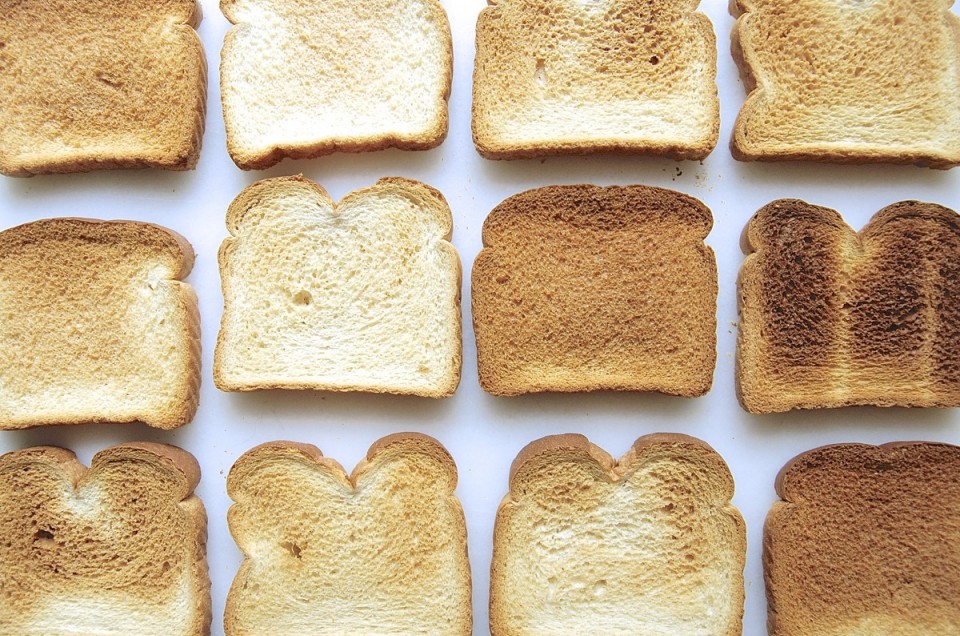


Do you ever have trouble with cookies burning? What about a pie whose bottom crust is doughy and white, rather than crisp and flaky? And why, occasionally, does one side of your cake rise more quickly than the other? The answer may be oven hot spots.
Your oven is basically a metal box whose interior can be heated to temperatures ranging from barely warm to screaming hot. We bakers typically bake in a “moderate” oven: 350°F. But that’s not to say that when you preheat your oven to 350°F, every cubic inch of air inside the oven is 350°F — any more than every spot in your air-conditioned house is 66°F.
Your oven is hottest around its periphery: sides, bottom, and top. The closer you get to those metal walls, the hotter the air. Thus anything baked towards the periphery will bake and brown more quickly than anything baked in the center of the oven. Note: Information in this post may not apply to convection ovens.
A loaf of quick bread or pan of sheet cake placed in the exact center of the oven will probably bake flawlessly: nicely risen, evenly browned on top, and neither burned nor raw on the bottom.
But bake two 9” x 13” cakes side by side, where the far edges of both pans are close to the oven wall; or position pans of cookies on three racks so that some are near the bottom of the oven, and others near the top — and you may experience uneven browning, burned bottoms, or tough edges.
The cause? Oven hot spots.
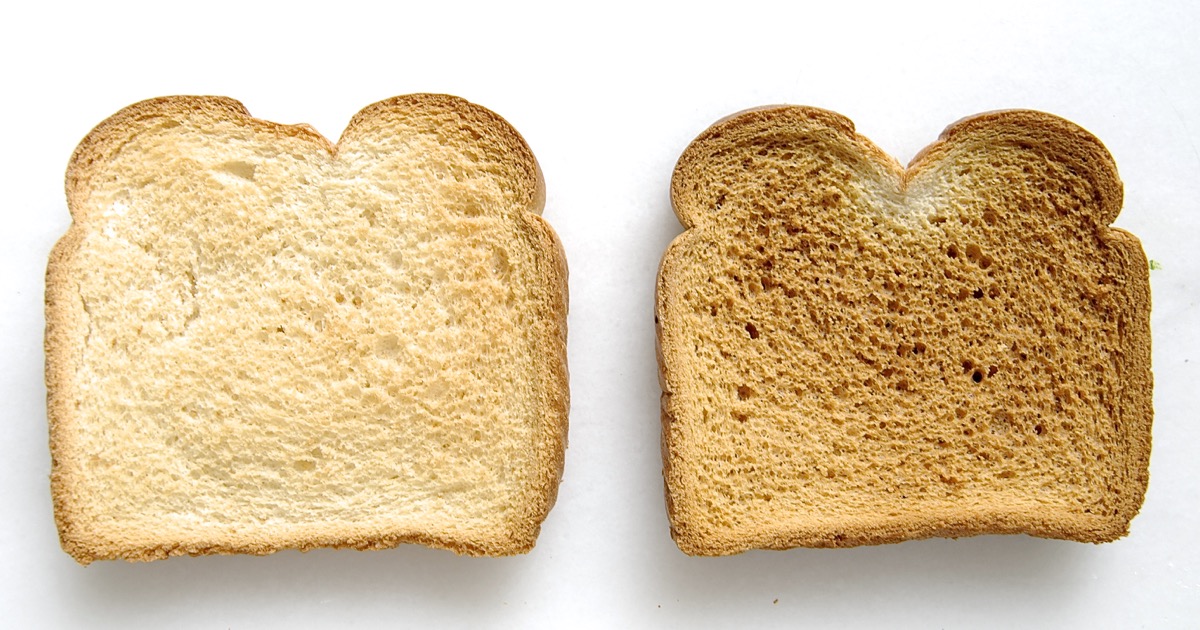
Just how much does the temperature vary between that sweet spot in the center of the oven and everywhere else? Every oven is different — which is why you should test for oven hot spots using this simple technique.
First, buy a jumbo loaf of inexpensive white bread (because you don't need to waste your homemade loaf on an oven test).
Position your oven racks where you typically have them for baking. Preheat your oven to 350°F, giving it sufficient time to come to temperature. Check its temperature with an independent thermometer; the oven signal telling you it’s preheated is probably far from accurate. (My oven takes a good 30 minutes to preheat to 350°F, though it tells me it’s hot enough after 15 minutes. Liar liar pants on fire!)
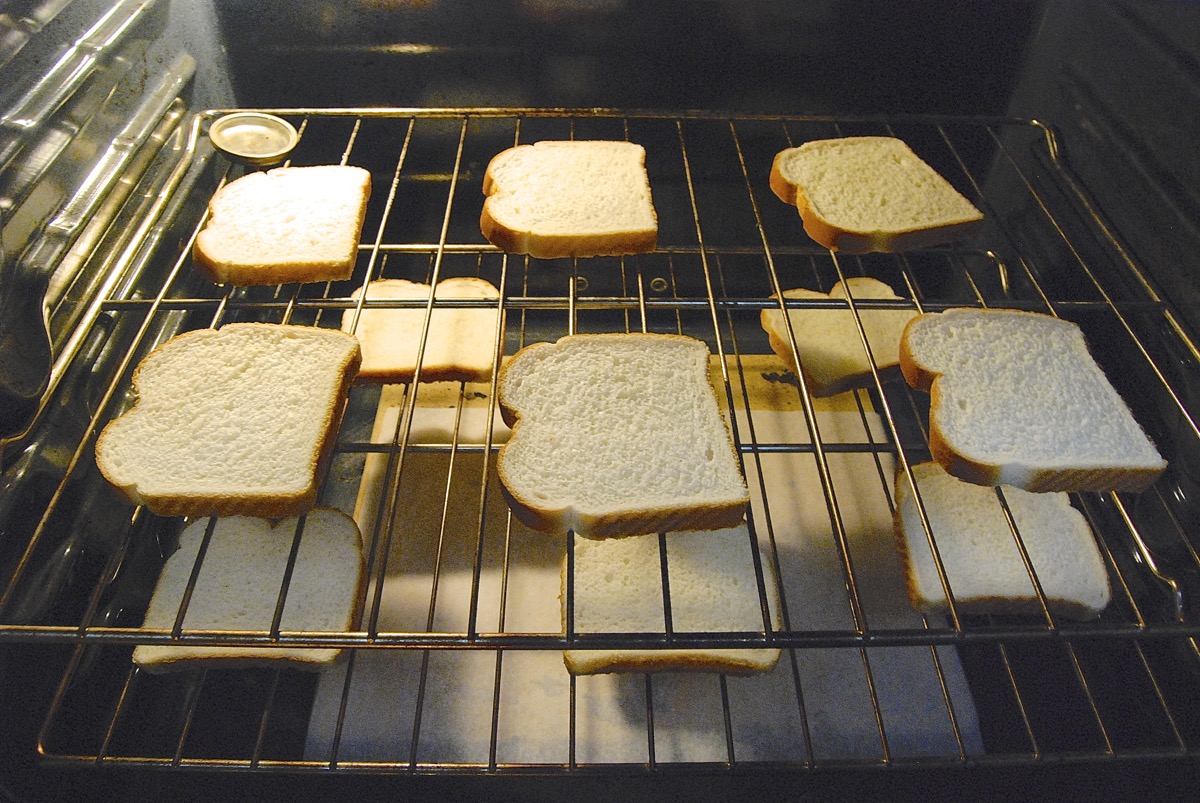
Space slices of bread over the racks.
Bake the bread until the center slices are a light golden brown; in my oven, this takes about 18 minutes.
Remove the racks from the oven, and check the results. Assess the brownness of each slice of bread (both top and bottom) based on where it was on the rack, and where the rack was in the oven.
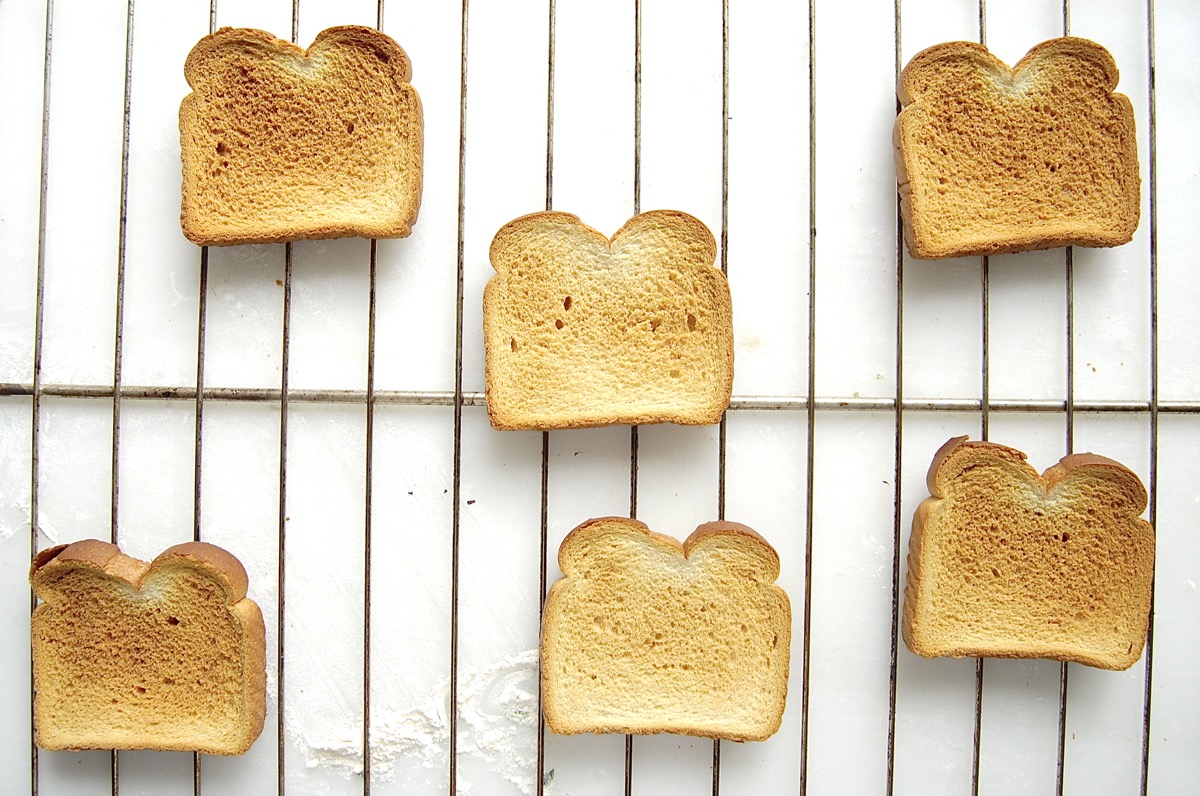
Do you see any differences in browning? Unless you own the Rolls Royce of ovens (whatever that may be) — of course you do.
Typically, the slices closest to the center of the oven will be the most evenly browned, as well as the lightest. Those around the edges (front, back, and sides) will be darker, and probably show varying degrees of browning. Perhaps one or two slices of bread are VERY browned: these denote your oven’s hottest hot spots.
What do you do with this information?
Combine it with a dollop of common sense and use it to position your pans for optimum baking results.
Your oven may be much hotter towards the bottom than the top — even if the heating element is on the top. If you have trouble with cookies burning on the bottom, keep your cookie sheets off the bottom rack.
On the other hand, if your bottom pie crust always seems underdone, take advantage of that hot spot at the bottom of your oven by baking pies on the bottom rack.
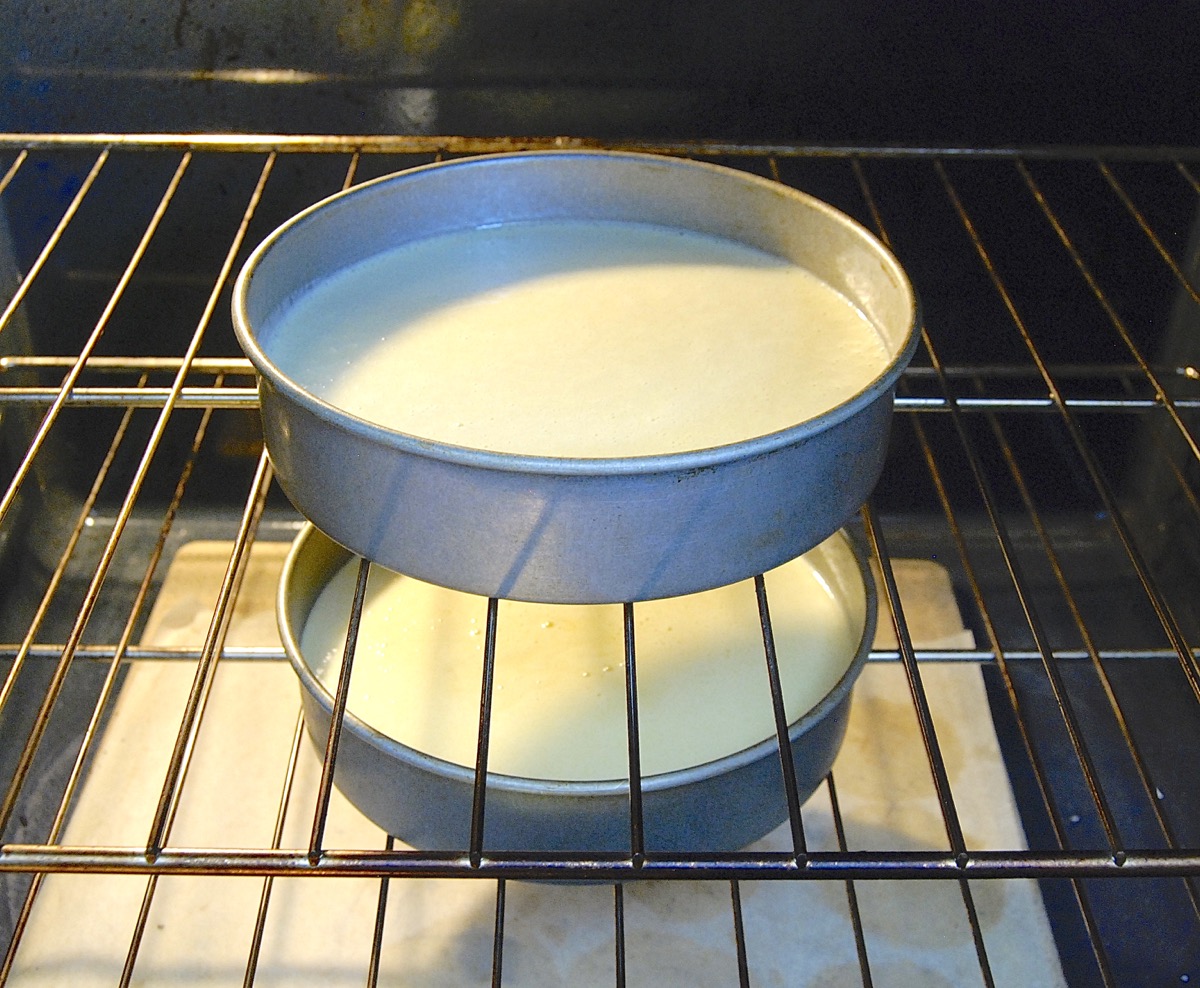
If you have trouble with round cake layers rising or browning unevenly, bake them as close to the center of the oven as possible. Instead of placing two pans side by side on the same rack, place them on two racks, one below the other (spacing the racks about 4 1/2” apart for best heat circulation).
Two-thirds of the way through their bake, rotate the pans: top pan to bottom, bottom pan to top. In addition, give each pan a 180° spin so the side that was formerly facing the back is now facing the front.
Why not rotate the pans halfway through? Certain thin-batter cakes can be delicate, and moving them around the oven before they’re set can cause them to fall. However, other baked goods — cookies, muffins, bars, etc. — should be rotated at the halfway point.
What if you’re having an issue with yeast bread not browning sufficiently: e.g., sourdough? Try positioning the pan on an upper oven rack, where the top crust is closer to the hot wall or heating element at the top of the oven
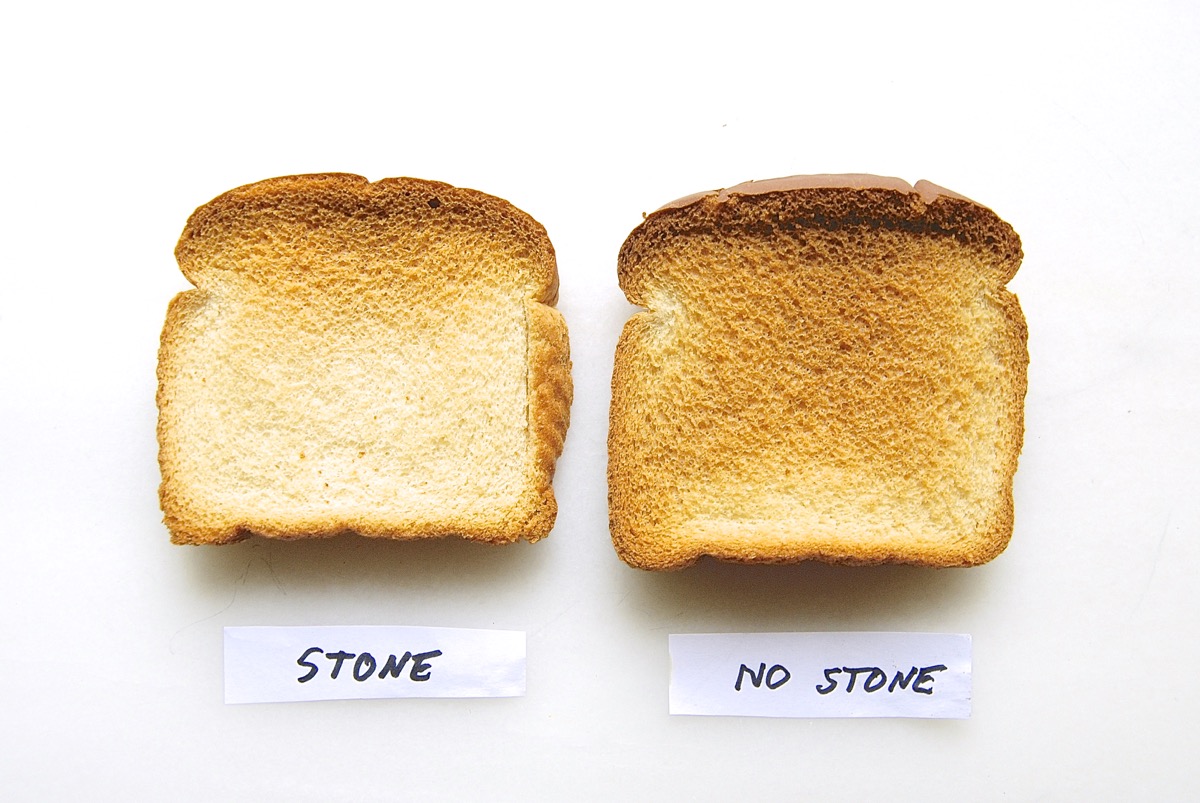
Baking stones are known for their ability to absorb and hold heat, and then transfer it to whatever is set on top: pizza, baguettes, a crusty sourdough loaf.
But they're also an excellent fix for excessive heat at the bottom of your oven. Place a baking stone on the lowest rack or on the oven floor (if there's no heating element there). The stone absorbs heat from the floor of the oven and gently diffuses it upwards, effectively eliminating any hot spots.
Are you convinced? Test for oven hot spots today — and use the results to inform your pan placement going forward for everything from cakes to cookies.

